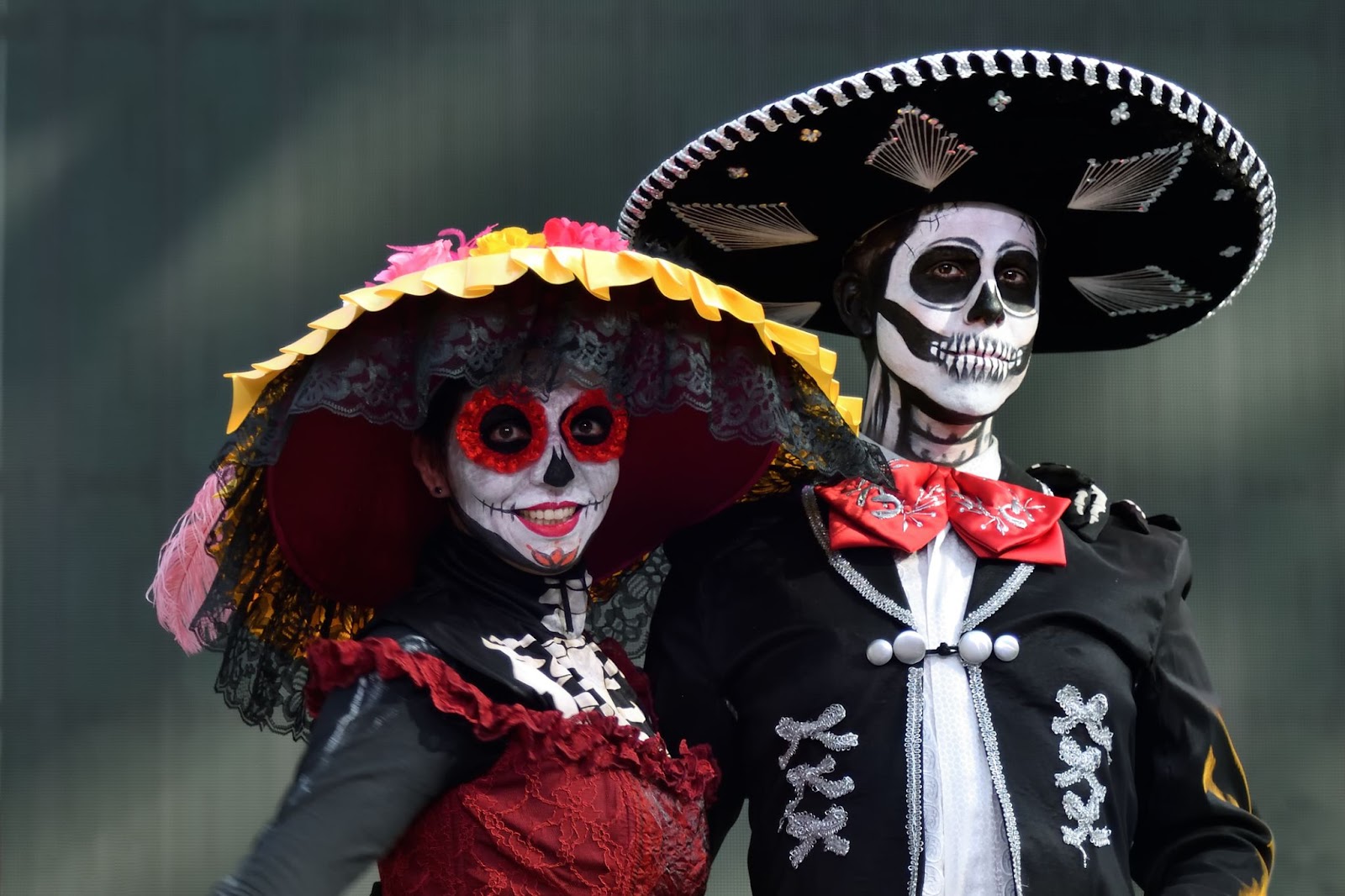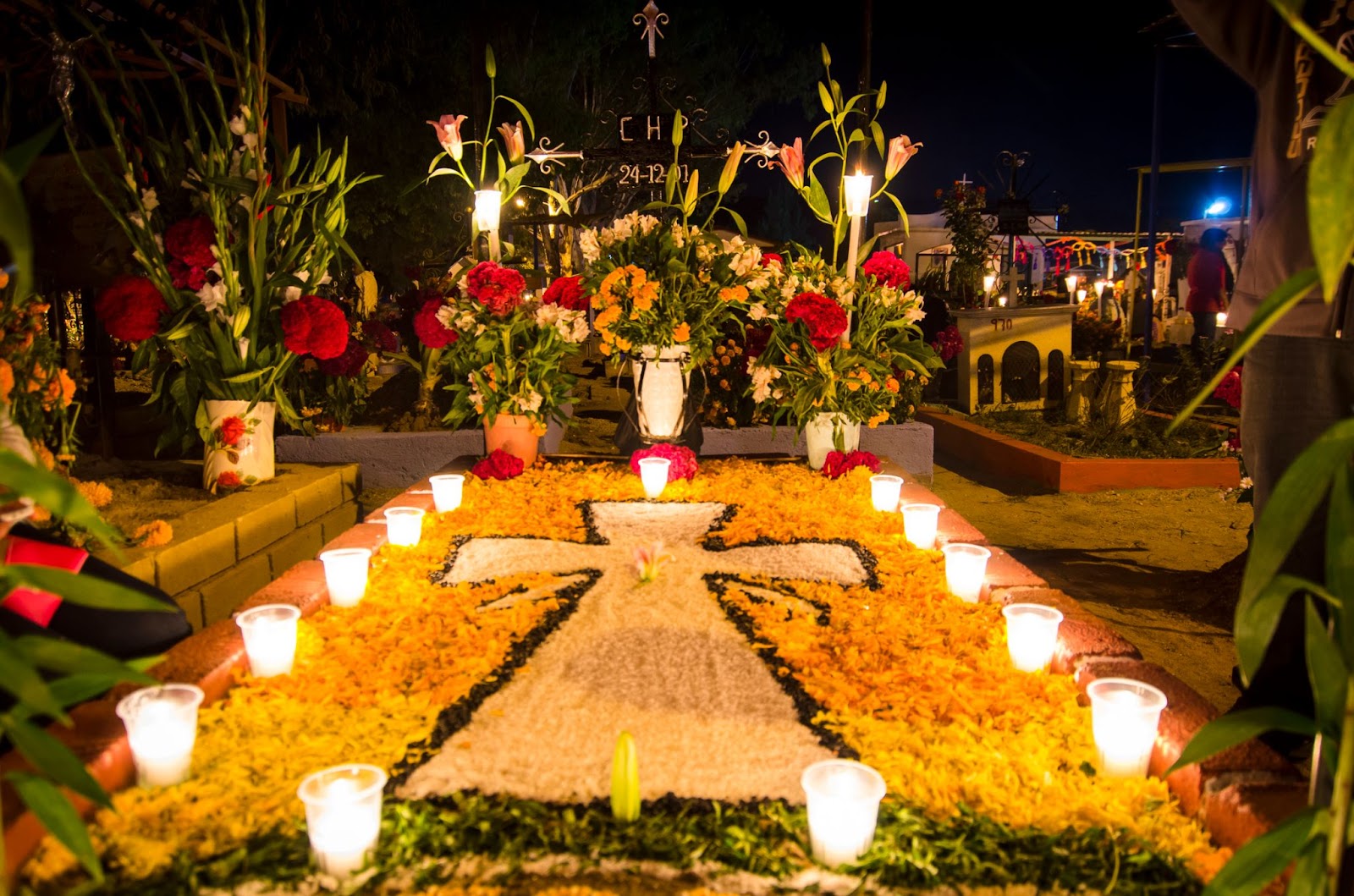Day of the Dead in Spanish: Mexican Culture and Traditions

Get our free email course, Shortcut to Conversational.
Have conversations faster, understand people when they speak fast, and other tested tips to learn faster.
More infoCulture, history, and traditions are essential when it comes to learning a language, it’s not all about grammar and vocabulary! That’s why today’s post will be devoted to The Day of the Dead, in Spanish known as el Día de los Muertos.
Nowadays many cultural festivities, such as Chinese New Year or Halloween, have been globalized. Another example of such cultural expansion is The Day of the Dead, in Spanish and English-speaking countries alike. El Día de los Muertos has always been a very famous celebration in Latin America, especially in Mexico.
These days, however, what countries celebrate The Day of the Dead? Now it’s celebrated worldwide wherever there’s a Mexican around! This is particularly the case throughout the United States, where many people with Mexican heritage pay tribute to their deceased relatives and friends on this special occasion.
In this post, we’ll focus on Day of the Dead decorations, traditions, celebrations, food, costumes, and all you need to know to celebrate and talk about The Day of the Dead in Spanish.
When is Day of the Dead 2024?
When is Día de los Muertos 2024? The Day of the Dead celebration is held on November 1st and 2nd.
November the 1st is known as All Saints Day, in Spanish el Día de Todos los Santos, dedicated to dead children, or los muertos chiquitos. November 2nd is devoted to dead adults, called el Día de los Fieles Difuntos, in English Faithful Deads Day.
According to tradition, the gates of heaven are opened at midnight on October 31st and the spirits of children can rejoin their families for 24 hours. The spirits of adults can do the same on November 2nd.
However, in some Mexican cities, the Día de los Muertos celebrations and arrangements start up to four days before November 2nd. So for some families, if you ask when is the Day of the Dead, they’ll contend that it’s more of a multi-day occasion.
What is Day of the Dead?
El Día de los Muertos is a celebration of life, not death. When we think about the Day of the Dead in Spanish, we emphasize remembering over forgetting our deceased loved ones. In short, el Día de los Muertos is a day to remember the lives of the departed.
On the occasion of the Day of the Dead, it’s believed that the border between the spirit world and the living world disappears. During these days, the souls of the dead wake up and return to the living world to feast, drink, dance, and play music with their loved ones. In turn, the living family members treat the deceased as honored guests in their celebrations.
Tradition has it that, on the Day of the Dead, flowers, favorite foods, and other offerings are left at the gravesites of the deceased, or even on dedicated altars (in Spanish ofrendas) built in the families’ homes.
Day of the Dead: Traditions
In addition to the highly personal manifestations of the Day of the Dead holiday described in the last section, el Día de los Muertos is also known for some of its very visible traditions. Let’s take a look at the most important ones here.
Day of the Dead: Decorations
A lot of the Day of the Dead decorations are exclusively within and around the home. During Día de los muertos, families gather and set up altars (in Spanish ofrendas) at their homes. The ofrendas are meant for the deceased to find their way home and to provide them with what they need for their journey.
The ofrendas include pictures of the dead loved ones (fotos de los seres queridos), objects that belonged to them, water (agua), paper banner (papel picado), bread of dead (pan de muerto), and candles (velas) forming a cross that represents the cardinal directions.
Traditional Day of the Dead flowers, mainly marigolds called cempazuchitl, are also used profusely as Day of the Dead decorations. These flowers are placed in the ofrendas as well as in the graveyards. Traditionally, petals of the cempazuchitl Day of the Dead flowers are thought to attract souls back from the dead to the ofrenda, while the candles are there to guide them.
Day of the Dead: Food
In addition to the pan de muerto we mentioned in the last section, we can point out a few other specific Día de los Muertos foods.
The most famous are the Day of the Dead sugar skulls (in Spanish calaveritas de azúcar), which symbolize the cyclical nature of life.
Another traditional food is mole, which is a thickened sauce made with chilis, sesame seeds, herbs, spices, chocolate, and fruit.
To drink, people enjoy atole, an ancient beverage made from corn meal and water, and flavored with various sweet fruits.
Day of the Dead: Parade
In many cities around Mexico there’s an annual Day of the Dead parade. In recent years these parades (in Spanish desfiles) have become really popular, with the biggest one in downtown Mexico City. During the Día de los Muertos parade, the streets are filled with giant skeletons, colorful costumes, mariachi music, and dancers. Thousands of residents and tourists line the route through the capital to watch the procession!
Many of the people attending, including both kids and adults, go to the festivities wearing colorful Day of the Dead costumes and bright makeup. Skeletons (in Spanish calacas) are among the most common costumes, while the theme of most Day of the Dead makeup revolves around the Día de los Muertos skulls.
During the parades, dancers and floats pay tribute to Mexican culture and tradition, from street food vendors to authors, to icons of cinema and revered artists like Frida Kahlo.
Day of the Dead: Art
The Día de los Muertos skull, known as the Catrina skull, is one of the most prominent Day of the Dead symbols. But what is the origin of the Day of the Dead skull? We can give credit to the early-20th century illustrator and cartoonist José Guadalupe Posada, whose artworks often included skeletal sketches mocking politicians and commenting on revolutionary politics. One of the most famous characters created by Posada was la Catrina.
La Calavera Catrina (in English the Elegant Skull), consisted of a female skeleton adorned with makeup and dressed in classy clothes. This work of art was intended as a satire on Mexicans adopting European fashions over their heritage and traditions.
La Calavera Catrina was soon recognized as one of the most outstanding Day of the Dead icons, especially after 1947 when the famous muralist Diego Rivera portrayed Catrina standing next to José Posada in one of his murals. Today, the Day of the Dead skull has become one of the most famous symbols of Mexican culture.
Conclusion
Today’s post focused on the important cultural occasion known as the Day of the Dead, in Spanish el Día de los Muertos. We brought you through some of the history and traditions of this unique celebration, namely as a time when families and friends gather together to celebrate the lives of those who have gone before. It’s a time of great joy and remembrance, and, of course, a time to celebrate with your loved ones that we’re still alive!
In addition to the family-focused nature of el Día de los Muertos, we also looked at a lot of the ways that the event is celebrated publicly, especially through the Day of the Dead parade. We saw how traditional Day of the Dead costumes often look like skeletons, while Day of the Dead makeup imitates the sugar skulls people use as decorations and in a lot of Día de los Muertos art. And do you remember the traditional Day of the Dead flowers? Yes, they’re a type of marigold, known locally as cempazuchitl!
So to finish up, when is Day of the Dead 2024? It’s on November 1st and 2nd! Now you’re ready to understand and participate in the festivities, and even to talk about the Day of the Dead in Spanish. We’ll leave you with one last phrase so you know how to say Happy Day of the Dead in Spanish: ¡Feliz día de los muertos!









